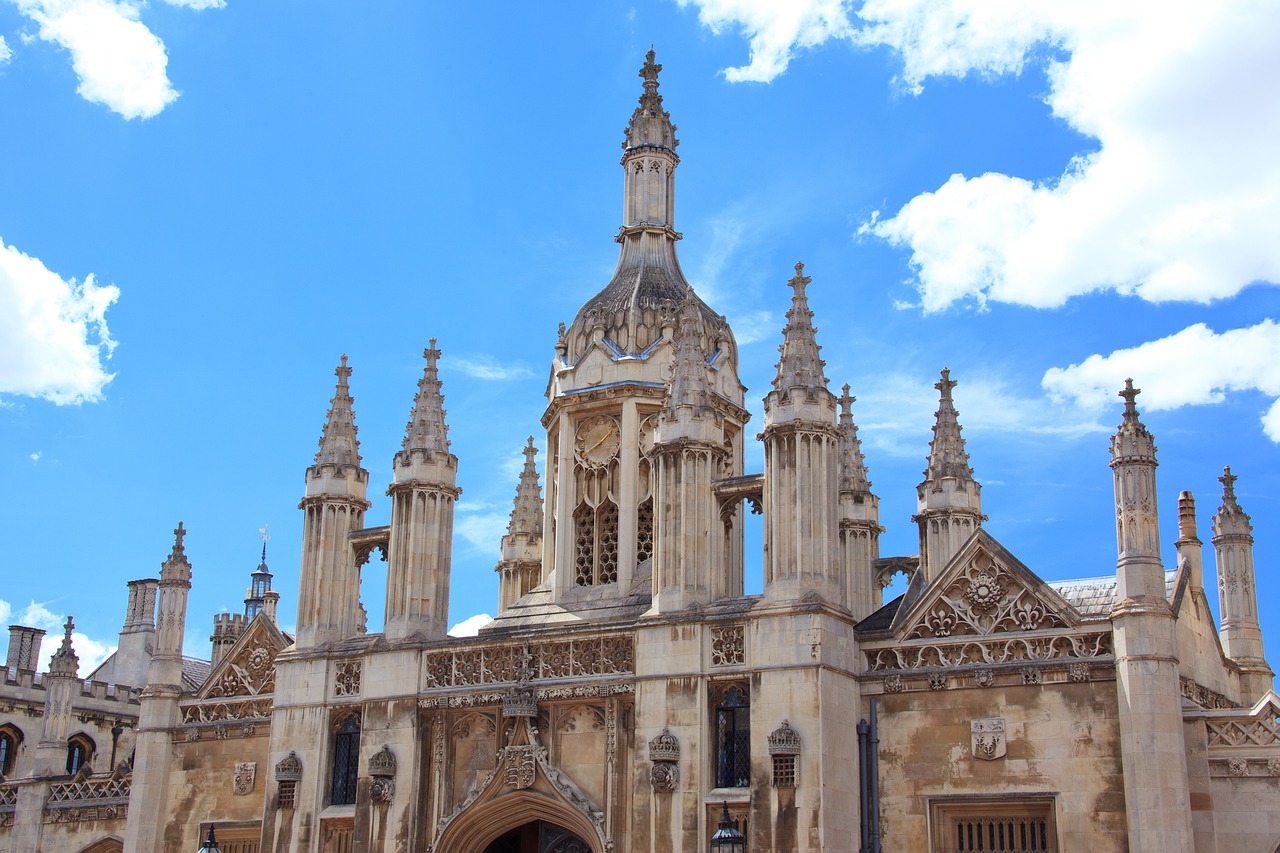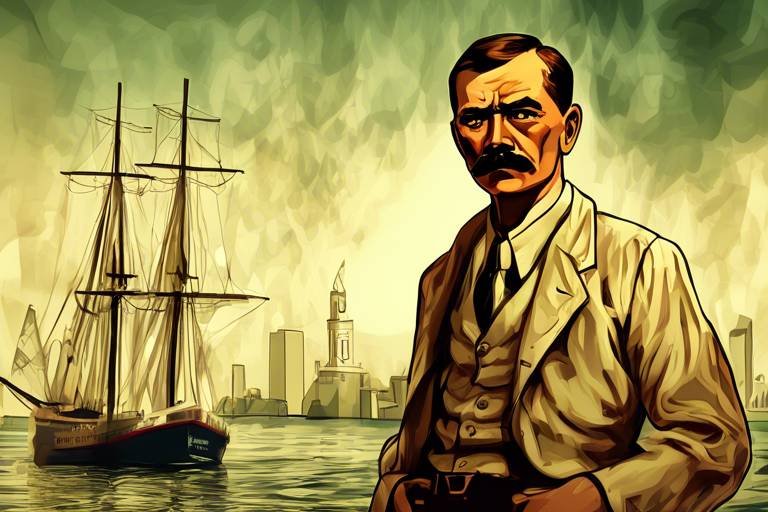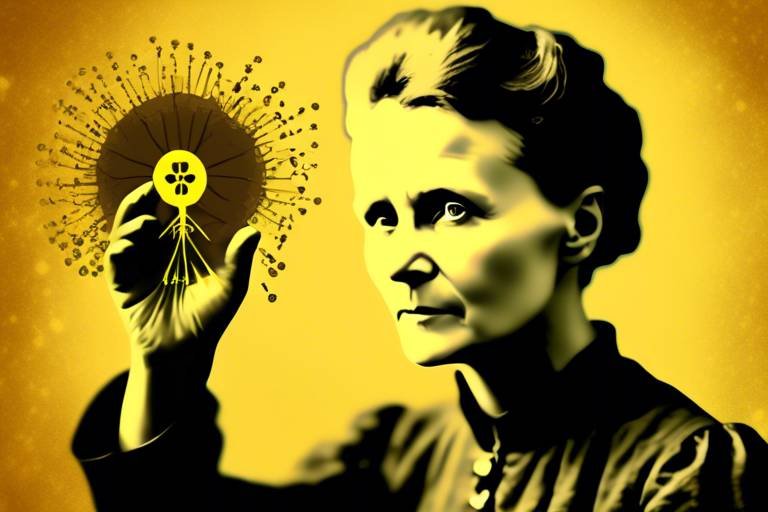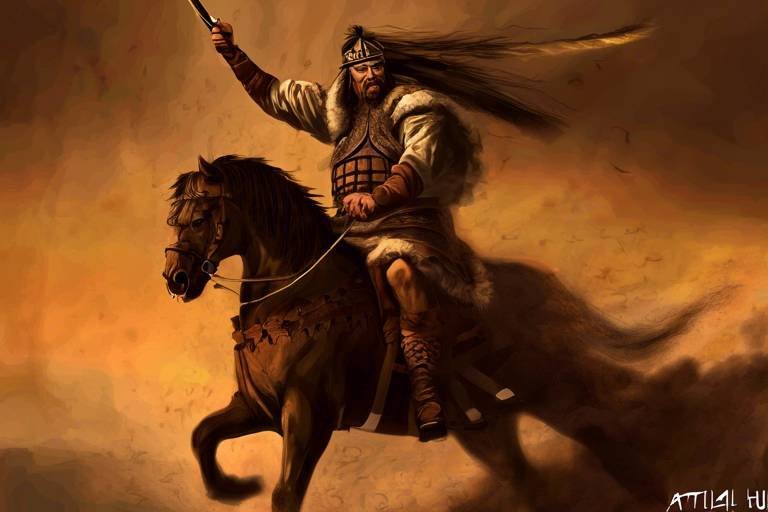Richard III: The Last Plantagenet King of England
Richard III, the last Plantagenet King of England, left a lasting mark on the history of the country during his brief reign from 1483 to 1485. His story is one filled with intrigue, controversy, and ultimately, tragedy. Born into a tumultuous period of English history, Richard III's life and legacy continue to captivate historians and enthusiasts alike.

Early Life and Background
Richard III, the last Plantagenet King of England, was born on October 2, 1452, at Fotheringhay Castle in Northamptonshire. He was the youngest son of Richard, Duke of York, and Cecily Neville. Growing up amidst the turbulent times of the Wars of the Roses, Richard III's early life was marked by political unrest and familial rivalries that would later shape his destiny.
As a member of the powerful House of York, Richard III was exposed to the intricacies of court politics from a young age. His father's ambitions for the English throne and the ongoing power struggles between the Yorkists and Lancastrians provided a backdrop for Richard's formative years. These experiences instilled in him a sense of duty, loyalty, and a keen understanding of the complexities of medieval governance.
Richard III's upbringing was heavily influenced by his elder brother, King Edward IV, who ascended to the throne in 1461. Under Edward's patronage, Richard was appointed to various prestigious positions, including the Duke of Gloucester and the Lord Protector of the Realm. These roles allowed him to gain valuable administrative experience and establish himself as a capable and loyal supporter of the Yorkist cause.
Despite his close relationship with Edward IV, Richard III faced personal tragedies early in his life, including the deaths of his father and brother Edmund. These losses, coupled with the ongoing political turmoil in England, further shaped Richard's character and fueled his ambitions for power and stability within the realm.
Richard III's marriage to Anne Neville, the widow of Edward of Westminster, solidified his connections to the influential Neville family and strengthened his position within the Yorkist faction. Anne's support and guidance played a significant role in Richard's political career and his eventual rise to the throne of England.

Ascension to the Throne
Richard III's ascension to the throne of England in 1483 was marked by controversy and intrigue, following the sudden death of his brother, King Edward IV. As the youngest brother in the powerful Plantagenet family, Richard III faced a tumultuous political landscape rife with factions vying for power and influence. Despite being appointed as the Lord Protector of the realm for his nephew, the young King Edward V, Richard III swiftly moved to secure his own claim to the throne.
Utilizing his military prowess and political acumen, Richard III orchestrated a series of strategic moves that culminated in his declaration as the rightful King of England. His actions, including the arrest of key figures in the royal court and the dissemination of propaganda questioning the legitimacy of his nephews' claim to the throne, solidified his position as the monarch.
Amidst swirling rumors of foul play and accusations of treachery, Richard III's coronation took place in July 1483 at Westminster Abbey. Despite the pomp and ceremony surrounding his ascension, whispers of discontent and skepticism lingered among the nobility and common folk alike.
The events leading up to Richard III's claim to the throne remain shrouded in mystery and controversy, with historians and scholars continuing to debate the legitimacy of his actions and the true extent of his involvement in the events that transpired. As the last Plantagenet king of England, Richard III's ascension to power marked a pivotal moment in the country's history, setting the stage for the tumultuous years that would follow.

Reign and Policies
During his brief but impactful reign as King of England, Richard III implemented several key policies and governance strategies that aimed to solidify his power and assert his authority over the realm. Known for his decisive leadership style, Richard III sought to address various challenges facing the kingdom while also advancing his own political agenda.
One of the central aspects of Richard III's reign was his focus on judicial reform and the administration of justice. He introduced legal reforms aimed at improving the efficiency and fairness of the legal system, seeking to uphold law and order throughout the realm. By establishing a system of royal commissions and promoting the use of common law, Richard III aimed to centralize legal authority and ensure the swift dispensation of justice.
Furthermore, Richard III implemented economic policies designed to stabilize the kingdom's finances and promote economic growth. He enacted measures to regulate trade, support local industries, and encourage agricultural development. By fostering economic prosperity, Richard III aimed to strengthen the crown's financial position and enhance the overall well-being of his subjects.
In addition to his domestic policies, Richard III also pursued an assertive foreign policy agenda aimed at safeguarding England's interests abroad and asserting its influence on the international stage. He forged alliances with various European powers, engaged in diplomatic negotiations, and sought to expand England's sphere of influence through strategic marriages and military campaigns.
Despite his efforts to consolidate power and implement progressive policies, Richard III faced significant opposition from various factions within the nobility and the clergy. His controversial rise to the throne and the shadow of suspicion cast over his reign due to the disappearance of the Princes in the Tower fueled discontent and resistance among his detractors.
In the end, Richard III's reign was marked by both achievements and challenges, reflecting the complexities of medieval governance and the turbulent political climate of the time. His policies and decisions continue to be a subject of historical debate and scholarly analysis, shaping our understanding of his legacy as the last Plantagenet King of England.

Wars of the Roses
The Wars of the Roses were a series of bloody conflicts that ravaged England during the 15th century, primarily fought between the rival houses of Lancaster and York. This dynastic struggle for the English throne was marked by shifting allegiances, betrayals, and brutal battles that left a lasting impact on the country's history. The conflict derived its name from the symbols associated with each house - the red rose of Lancaster and the white rose of York, which were eventually combined to create the Tudor rose symbolizing the union of the two houses after the end of the wars.
At the heart of the Wars of the Roses was the struggle for power and control over the English monarchy, with both the Lancastrian and Yorkist factions vying for supremacy. The conflict was fueled by longstanding grievances, personal ambitions, and complex family connections that further complicated the political landscape of the time. The wars saw the rise and fall of several prominent figures, including Richard III, whose involvement in the conflict would ultimately shape his legacy as the last Plantagenet king of England.
The Wars of the Roses were characterized by a series of key battles that determined the course of the conflict, including the Battle of Towton in 1461, which resulted in a decisive victory for the Yorkists and solidified Edward IV's claim to the throne. Subsequent battles, such as Barnet and Tewkesbury, further cemented the Yorkist hold on power, leading to a period of relative stability under Edward IV's rule.
However, the Wars of the Roses were far from over, as internal strife within the Yorkist camp and external threats from rival claimants continued to plague England. The return of Henry Tudor, later Henry VII, from exile marked a turning point in the conflict, culminating in the fateful Battle of Bosworth Field in 1485, where Richard III met his end and the Tudor dynasty was established.

Controversies and Allegations
Richard III, the last Plantagenet King of England, is a figure shrouded in controversy and allegations that have persisted through the centuries. One of the most enduring mysteries surrounding Richard III is the disappearance of the Princes in the Tower, his young nephews and potential rivals to the throne. The fate of the Princes remains a subject of debate among historians and has fueled speculation about Richard's involvement in their presumed murders.
Accusations of tyranny and ruthless ambition have also plagued Richard III's reputation. Critics have pointed to his swift rise to power and the execution of key political adversaries as evidence of his authoritarian rule. The execution of Lord Hastings, a close ally of Edward IV, on charges of treason without a trial, further tarnished Richard's image and raised suspicions about his methods of governance.
Furthermore, Richard III's marriage to Anne Neville, the widow of Edward of Westminster, has raised eyebrows due to the political implications of the union. Some have questioned the timing and circumstances of the marriage, suggesting that Richard may have orchestrated it to consolidate his claim to the throne and secure his hold on power.
Despite these controversies, supporters of Richard III argue that he was a capable and reform-minded monarch who implemented progressive policies during his brief reign. His efforts to promote the rights of commoners, streamline the legal system, and combat corruption within the government have been cited as evidence of his commitment to good governance.
Ultimately, the controversies and allegations surrounding Richard III reflect the complex and often contradictory nature of historical narratives. As historians continue to reassess and reinterpret the events of Richard's reign, the debate over his legacy and character remains a subject of fascination and intrigue for scholars and enthusiasts alike.

Battle of Bosworth Field
The Battle of Bosworth Field in 1485 marked a pivotal moment in English history, where the fate of the kingdom hung in the balance as two rival claimants to the throne clashed on the battlefield. On one side stood King Richard III, the last Plantagenet monarch, known for his controversial reign and ruthless tactics. On the other side was Henry Tudor, a challenger with a tenuous claim but a strong desire to seize power.
As the armies converged at Bosworth Field, the atmosphere crackled with tension, like a storm brewing on the horizon. The clash of swords, the thunder of hooves, and the cries of battle echoed across the fields, creating a scene of chaos and carnage. Both sides fought with ferocity and determination, each desperate to emerge victorious and secure their claim to the throne.
Richard III, mounted on his loyal steed, led his forces with a fierce resolve, his crown seemingly within reach yet slipping away with each passing moment. The sun beat down mercilessly on the warriors, casting a harsh light on the brutality of war and the high stakes of the conflict. The fate of the kingdom teetered on a knife's edge, waiting to tip in favor of the victor.
Amidst the chaos and confusion of the battlefield, the tide turned against Richard III as betrayal and desertion weakened his forces. The once-mighty monarch found himself isolated and vulnerable, a lone figure in a sea of enemies. As the dust settled and the echoes of battle faded, Richard III met his tragic end, his crown lost and his legacy tarnished by defeat.
The Battle of Bosworth Field was not just a clash of armies, but a clash of destinies, where the future of England hung in the balance. The outcome of that fateful day would shape the course of history, ushering in a new era with the rise of the Tudor dynasty and the end of the Plantagenet reign. The echoes of that battle reverberate through the annals of time, a reminder of the fragility of power and the inexorable march of fate.

Legacy and Historical Impact
Richard III, the last Plantagenet King of England, left a complex legacy that continues to intrigue historians and enthusiasts alike. His reign, though brief, had a profound impact on the course of English history, marking the end of the Plantagenet dynasty and the beginning of the Tudor era. Richard III's historical impact can be viewed through various lenses, from his controversial rise to power to the enduring debates over his character and actions.
One of the key aspects of Richard III's legacy is his reputation as a monarch. Often depicted in conflicting lights, he is remembered both as a ruthless tyrant and a misunderstood ruler. The allegations of his involvement in the disappearance of the Princes in the Tower have fueled centuries of speculation and debate, adding layers of mystery to his legacy.
Moreover, Richard III's defeat at the Battle of Bosworth Field in 1485 marked the end of the Wars of the Roses and the beginning of the Tudor dynasty under Henry VII. This transition from Plantagenet to Tudor rule reshaped the political landscape of England, setting the stage for a new era of governance and royal lineage.
Despite his controversial reputation, Richard III's reign was not without its accomplishments. He implemented several legislative initiatives aimed at promoting justice and administrative efficiency, demonstrating a commitment to governance and reform. His policies, though short-lived, left a lasting imprint on the legal and administrative systems of England.
The rediscovery and reburial of Richard III's remains in the 21st century added a new chapter to his historical impact. The remarkable find in a Leicester car park in 2012 captured global attention and sparked renewed interest in the king's life and legacy. The solemn reburial ceremony at Leicester Cathedral in 2015 brought closure to a centuries-old mystery and highlighted the enduring fascination with Richard III.
In conclusion, Richard III's legacy and historical impact are multifaceted, encompassing controversies, achievements, and enduring debates. His story serves as a reminder of the complexities of medieval politics and the enduring power of historical narratives to shape our understanding of the past.

Rediscovery and Reburial
After centuries of obscurity, the remarkable rediscovery of Richard III's remains in 2012 beneath a car park in Leicester sent shockwaves through the historical and archaeological communities. The unearthing of the king's skeleton, complete with evidence of battle wounds and scoliosis, provided a rare glimpse into the physicality and possible cause of death of this controversial monarch.
The subsequent reburial ceremony at Leicester Cathedral in 2015 marked a poignant moment in English history, as Richard III was laid to rest with regal pomp and ceremony befitting a medieval king. The solemn occasion brought together royalty, dignitaries, and history enthusiasts to witness the final chapter in the saga of the last Plantagenet ruler.
Frequently Asked Questions
- 1. Was Richard III really a villain as portrayed in Shakespeare's play?
While Shakespeare's portrayal of Richard III as a ruthless and power-hungry villain has shaped popular perception, modern historians debate the accuracy of this depiction. Richard III's reign was marked by complexities and controversies, making it crucial to consider various perspectives and historical sources.
- 2. What is the significance of the discovery of Richard III's remains?
The discovery of Richard III's remains in 2012 beneath a car park in Leicester was a groundbreaking historical event. It provided valuable insights into the physical characteristics and possible causes of Richard III's death, sparking renewed interest in his reign and legacy among scholars and the public.
- 3. What impact did Richard III's defeat at the Battle of Bosworth Field have on English history?
Richard III's defeat at the Battle of Bosworth Field in 1485 marked the end of the Plantagenet dynasty and the beginning of the Tudor era. This pivotal moment reshaped the political landscape of England, leading to the establishment of the Tudor dynasty under Henry VII and the subsequent consolidation of power.



















